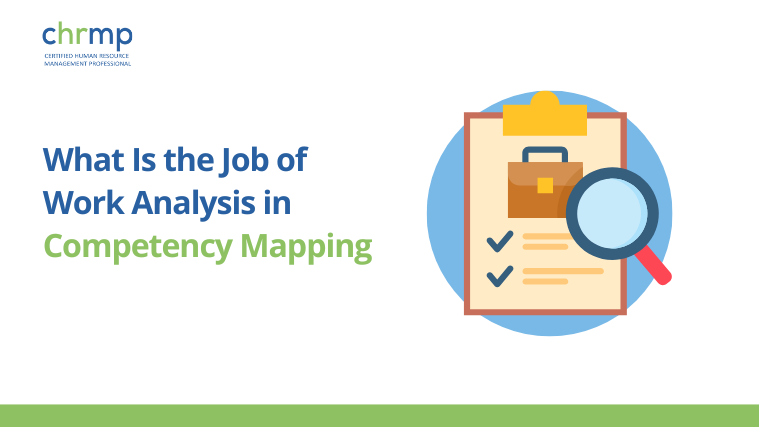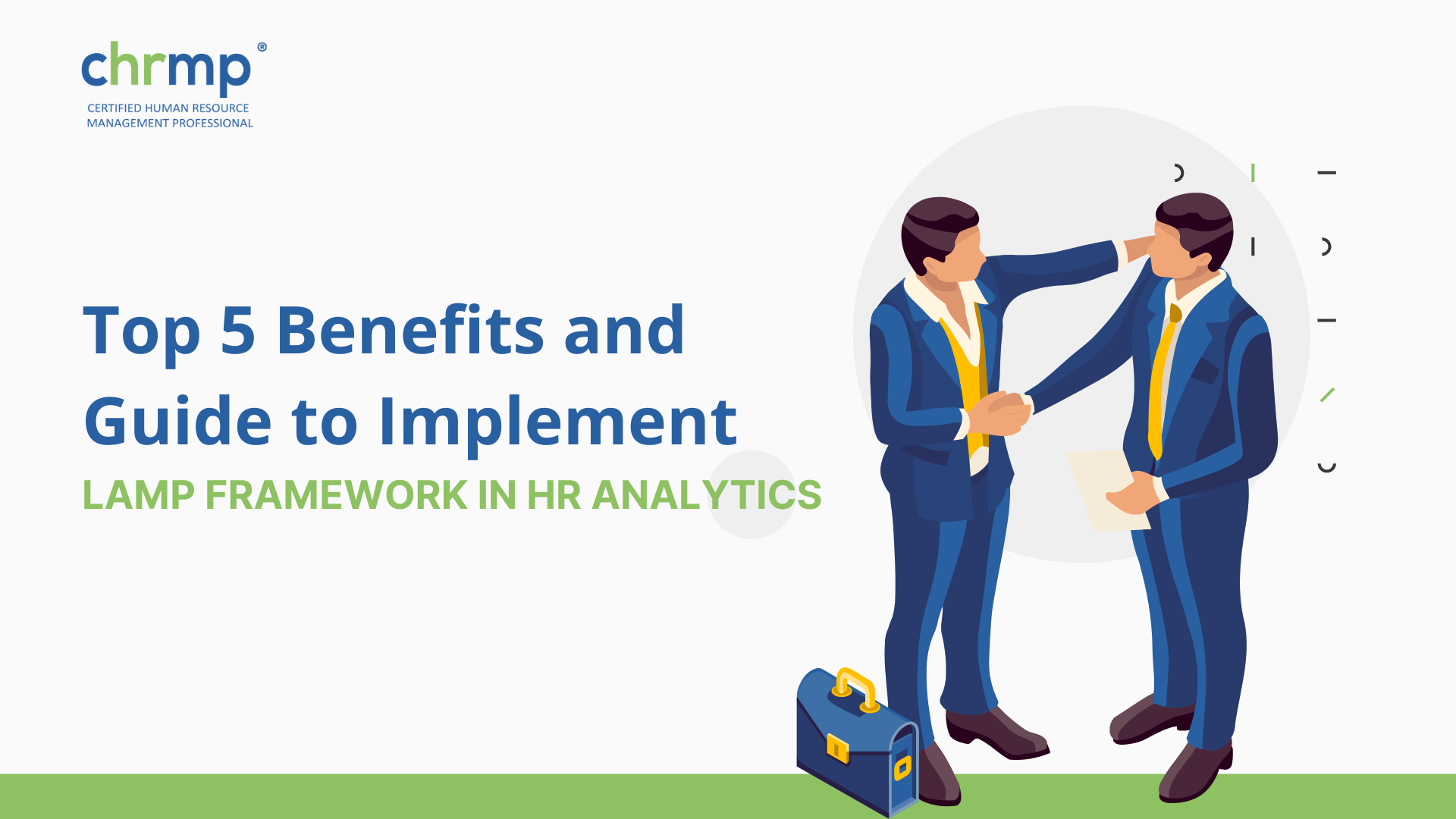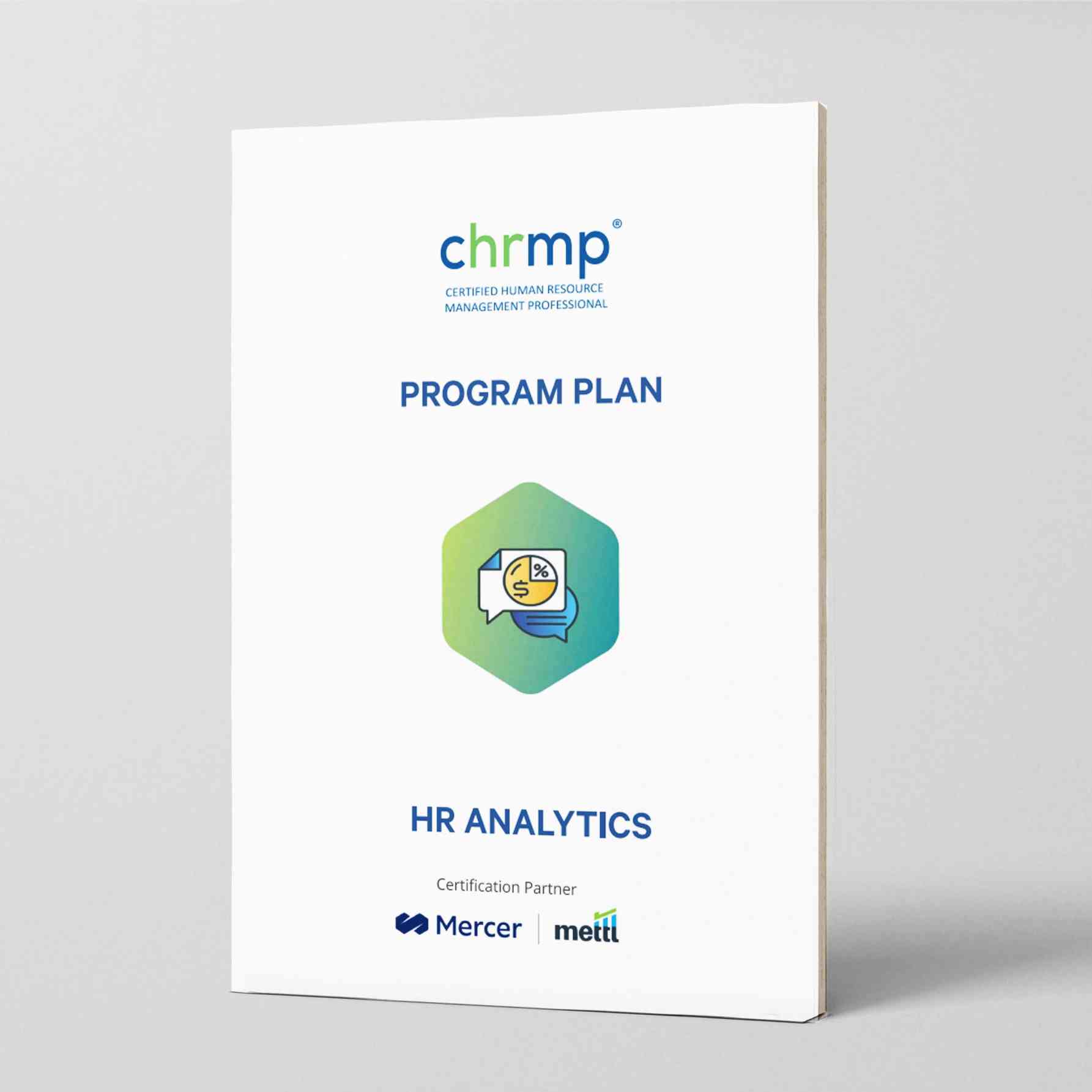

To build a stable, more vital workforce, HR is using people analytics to assist them in defining their hiring, training, and employee management strategies.
However, HR is one of the last corporate divisions to embrace data analytics properly.
Most businesses with analytics-using departments, such as marketing, customer care, and sales teams, utilize analytics to boost customer engagement and revenue.
They are frequently used by accounting and finance departments to find trends that may be used in corporate planning.
Businesses are beginning to realize how analytics may enhance their HR procedures and eventually assist them in improving their operations.
HR analytics may assist HR in employing, managing, and supporting the people who will help build the business and grow it toward its goals, even when they could be more customer-focused.
However, creating an HR analytics framework is the first step to integrating and utilizing analytics in your HR initiatives.
Organizations utilize the LAMP Framework in HR to comprehend and enhance employee performance. Logic, Analytics, Measures, and Process are referred to as LAMP.
This framework offers an organized method for gathering, evaluating, and leveraging employee performance data to inform organizational effectiveness and drive strategic change.
The LAMP framework is used to pinpoint and evaluate the elements that affect employee performance inside a company and to comprehend how the many facets of employee behavior relate to one another and how they impact overall performance.
Organizations may use this framework to develop a measuring system that will aid in understanding and enhancing employee performance, promoting strategic change, and enhancing organizational effectiveness.
Logic: This framework element refers to the methodical and logical process of discovering the pertinent data and metrics required to assess and enhance employee performance.
Analytics: This part of the framework examines the determined data and metrics to gather knowledge and spot patterns and trends.
Measures: The exact metrics and indicators used to track and evaluate employee performance are included in this framework section.
Process: This part of the framework refers to how the measuring system is implemented and managed, including how goals are created, progress is tracked, and decisions are made in light of the data.
Organizations may use this framework to develop a measuring system that will aid in understanding and enhancing employee performance, promoting strategic change, and enhancing organizational effectiveness.
In HR analytics, the LAMP Framework is crucial since it aids firms in:
Identify the critical aspects that affect employee performance: Organizations may use the framework to pinpoint the main elements that affect employee performance, including leadership, attitudes, and motives.
Measure and track employee performance: Employee performance is measured and tracked using a framework that offers a systematic method for selecting and monitoring the metrics used.
Analyse data to generate insights: Organizations may uncover patterns and trends to help them understand and enhance employee performance by studying the data and metrics.
Take action to improve performance: To enhance performance, take action. The framework offers a mechanism for doing so based on the insights drawn from the data, including defining goals, tracking advancement, and implementing adjustments.
Drive strategic change and organizational effectiveness: Boost employee performance, which in turn may boost corporate energy and strategic change: By utilizing the LAMP Framework, businesses can raise employee performance.
Companies may utilize the LAMP Framework as a reliable tool to understand employee performance better and make data-driven decisions that can enhance the entire organization’s performance.
The following are the main advantages of applying the LAMP Framework to HR analytics:
Better decision-making: The LAMP Framework offers an organized method for gathering, evaluating, and analyzing data, enabling firms to choose more wisely regarding hiring, training, and performance management.
Enhanced employee performance: Organizations may enhance and boost productivity by utilizing the framework to recognize and comprehend the elements that affect employee performance.
Better employee retention: Organizations may enhance employee satisfaction and lower turnover by utilizing data to understand better the elements that affect employee attitudes and motivations.
Enhanced organizational effectiveness: Organizations may drive strategic transformation and boost organizational effectiveness by utilizing the LAMP Framework to improve employee performance.
Cost savings: Organizations may make adjustments that can save time and money by using data to pinpoint weak areas.
Identifying critical areas for improvement: Organizations may prioritize the changes that will have the most impact by prioritizing the essential regions where improvements can be made based on data analysis.
Identifying patterns and trends: Patterns and trends in employee performance may be found using the LAMP Framework, which enables firms to forecast future performance and implement proactive adjustments.
Evidence-based decision-making: Organizations may guarantee that judgments are founded on facts rather than assumptions by employing data and evidence, which can enhance the decision-making process.
Here is a step-by-step tutorial for putting the LAMP Framework into practice in HR analytics:
Determine the primary elements that impact employee performance: Use the LAMP Framework to pinpoint the critical variables that affect employee performance, such as management style, employee attitudes, and employee motivation.
Find the pertinent measurements and data: Determine the information and metrics necessary for tracking and evaluating employee performance.
Data collection and organization: Gather pertinent data and arrange it so it is simple to examine and decipher.
Analyze the data: You may discover patterns and trends in employee performance by analyzing the data and using analytics tools.
Set targets and create action plans: To increase employee performance, define goals and develop action plans based on the insights revealed by the data.
Implement the action plans: To enhance employee performance, implement the strategies and make any required adjustments.
Monitor progress and make adjustments: To ensure the action plans are successful, monitor the progress and make any revisions.
Share the findings: Share the results with the appropriate parties, including management and staff, to ensure that everyone is aware of the changes and their effects.
Continuous Improvement: Make adjustments to the process after collecting input and reviewing the outcomes.
It’s crucial to remember that the LAMP Framework deployment may necessitate a shift in the corporate culture, mainly if the organization is not accustomed to leveraging data and evidence-based decision-making.
As a result, getting everyone on board is critical to properly explaining the process and advantages to the pertinent stakeholders.
Examples of how the LAMP Framework may be used in HR analytics are given below:
Recruiting: Organizations may determine the elements that affect the effectiveness of recruitment efforts by utilizing the LAMP Framework, including the sources of applicants, the hiring procedure, and the kind of job offers.
The recruiting process may be better with this information, raising the likelihood of selecting the best individuals.
Employee Development: Organizations may pinpoint the elements that affect employee development, such as training programs, mentoring relationships, and possibilities for career advancement, by utilizing the LAMP Framework.
The information provided can aid in designing and implementing employee development programs that are more successful in raising employee performance.
Performance Management: Organizations may pinpoint the elements that affect employee performance, such as work-life balance, motivation, and job satisfaction, by utilizing the LAMP Framework.
Performance management systems that are more successful in enhancing employee performance may be designed and implemented using the information provided.
Employee Retention: Organizations may discover the elements that affect employee retention, such as work-life balance, employee engagement, and job satisfaction, by utilizing the LAMP Framework.
Using the information provided, designing and implementing retention strategies that are more successful in lowering turnover and keeping top personnel.
Talent Management: Employee engagement, succession planning, and leadership development are a few examples of the characteristics that firms may identify utilizing the LAMP Framework for talent management.
Using this knowledge, talent management plans may be created and put into action that are better at attracting, developing, and keeping elite personnel.
Employee Benefits: Organizations may identify the variables that affect employee benefits, such as employee happiness, engagement, and turnover rate, by utilizing the LAMP Framework.
With the aid of this knowledge, employee benefit plans can be created and put into action in a way that will increase employee retention and satisfaction.
For implementing the LAMP Framework in HR analytics, consider the following guidelines and best practices:
Start with a clear objective: It’s crucial to grasp the project’s aims and objectives before using the LAMP Framework.
This will make it easier to ensure that the measurements and data gathered and evaluated are pertinent to the objective.
Involve key stakeholders: Key stakeholders should be involved in ensuring the LAMP Framework’s success, including HR managers, staff members, and business executives.
Insights and data will be more applicable to the company, and the action plans will be more doable and practical.
Utilize many data sources: The LAMP Framework may be used with several data sources, including survey results, performance statistics, and demographic information.
It is possible to have a more complete view of employee performance by utilizing various data sources.
Use the right analytics tools: The LAMP Framework needs the right tools to analyze the data and obtain insights.
These resources may include machine learning, data visualization, and statistical analysis.
Properly communicate results and action plans: Effectively communicating them to the appropriate stakeholders, including managers and employees, is critical.
Ensuring everyone is informed of the changes and their effects will assist.
Continuously evaluate and tweak: Keep an eye on developing the action plans and tweak them as necessary to ensure they work.
Continually obtain input, examine findings, and make necessary process updates.
Observe the steps: To find, measure, and analyze data linked to employee performance and use this data to drive strategic change and organizational effectiveness, follow the LAMP Framework’s procedure precisely as intended.
1. How does the LAMP framework differ from other frameworks used in HR analytics?
The LAMP Framework is distinct from existing HR analytics frameworks in a few significant aspects, including:
Focus: While other frameworks may concentrate on different facets of HR, like recruiting, employee development, or talent management, the LAMP Framework focuses solely on employee performance.
Structure: The LAMP Framework is an organized strategy that offers a logical and systematic means to find, gauge, and examine information on employee performance.
Other frameworks could be more centered on general best practices or principles and less organized.
Four essential parts make up the LAMP Framework: logic, analytics, measures, and process. These elements offer a simple, thorough method for comprehending and enhancing staff effectiveness.
Different frameworks may have different elements or concentrate on certain facets of HR analytics.
Evidence-Based: The LAMP Framework uses data and metrics to comprehend and enhance employee performance.
Other methods, like interviews and surveys, could rely more on subjective data.
The LAMP Framework emphasizes continual development through obtaining input, examining the outcomes, and revising the procedure as necessary.
There might be different emphases on ongoing development in other systems.
The LAMP Framework is a potent instrument that can improve organizational performance by developing a more profound knowledge of employee performance and making data-driven choices.
The LAMP Framework offers an organized, evidence-based method to comprehend and enhance employee performance.
Other frameworks may concentrate on other parts of HR and may have different components.
2. How can organizations implement the LAMP framework in their HR analytics strategy?
Organizations may take the following actions to integrate the LAMP Framework into their HR analytics strategy:
Determine the primary elements that impact employee performance: Use the LAMP Framework to pinpoint the critical variables that affect employee performance, such as management style, employee attitudes, and employee motivation.
Find the pertinent measurements and data: Determine the information and metrics necessary for tracking and evaluating employee performance.
Data collection and organization: Gather pertinent data and arrange it so it is simple to examine and decipher.
Analyze the data: You may discover patterns and trends in employee performance by analyzing the data and using analytics tools.
To increase employee performance, define goals and develop action plans based on the insights revealed by the data.
Implement the action plans: To enhance employee performance, implement the strategies and make any required adjustments.
Monitor progress and make adjustments: To ensure the action plans are successful, monitor the progress and make any revisions.
Share the findings: Share the results with the appropriate parties, including management and staff, to ensure that everyone is aware of the changes and their effects.
Continuous Improvement: Make adjustments to the process after collecting input and reviewing the outcomes.
It’s crucial to remember that the LAMP Framework deployment may necessitate a shift in the corporate culture, mainly if the organization is not accustomed to leveraging data and evidence-based decision-making.
As a result, getting everyone on board is critical to adequately explain the process and advantages to the pertinent stakeholders.
3. Are there any limitations to the LAMP framework in HR analytics?
The LAMP Framework for HR Analytics has various restrictions, just like any other framework:
Data Quality: The LAMP Framework is built on data analysis, and the accuracy and value of the insights gained will depend on the quality of the data gathered. Organizations must ensure that the data is collected consistently, reliably, accurately, and thoroughly.
Complexity: Because the LAMP Framework is a planned and methodical approach, putting it into practice can be challenging, mainly if the business is not accustomed to adopting data-driven decision-making. It could be necessary to alter the corporate culture; it might take some time before the organization completely grasps and applies the framework.
Workforce Planning, Recruitment, Retention, and Talent Management are additional HR analytics areas for which the LAMP Framework is inappropriate because it is limited to employee performance.
Reliance on metrics: Because the LAMP Framework depends on metrics to gauge and monitor employee performance, it might not be appropriate for firms that cannot gather and process data.
Limited to the present: Because the LAMP Framework is based on data from the present, it might need to be able to forecast performance or trends for the future.
Requires knowledge: For the LAMP Framework to be applied successfully, skill in data analysis, statistics, and visualization is required.
Organizations needing more skills could find the implementation process more manageable.
Overall, the LAMP Framework is a potent tool for analyzing and enhancing employee performance. Still, businesses must know its limits and ensure they have the knowledge and resources to use it successfully.
4. How can the LAMP framework be integrated with other HR technologies and tools?
The LAMP Framework may be connected with other HR technologies and applications to increase its potency and enrich the entire HR analytics strategy. Here are a few illustrations:
Human Resource Information Systems (HRIS): An HRIS is a tool for gathering, managing, and storing personnel data, thus the foundation for the LAMP Framework. The LAMP Framework and an HRIS may give businesses a complete picture of employee performance.
Workforce Management Systems: Workforce management systems may monitor employee performance-related indicators such as attendance, time and attendance, and other metrics. The LAMP Framework and a workforce management system may give businesses a more comprehensive view of employee performance.
Tools for Business Intelligence and Data Visualization: These resources may be used to analyze data and discover patterns and trends. Organizations may improve employee performance and decision-making knowledge by combining these technologies with the LAMP Framework.
Systems for managing learning: Learning management systems may be used to monitor staff training and advancement. The LAMP Framework and a learning management system may be integrated to help firms better understand how training and development initiatives affect employee performance.
Social media monitoring tools: These tools may monitor sentiment and staff involvement on social media. Organizations may better understand employee attitudes and behavior by combining the LAMP Framework with social media monitoring technologies.
Artificial intelligence and machine learning: These technologies may evaluate data and create predictions. Organizations may improve their understanding of employee performance and ability to anticipate future performance by connecting the LAMP Framework with these technologies.
Combining the LAMP Framework with other HR technology and tools may give employers a more complete view of employee performance and aid decision-making.
In conclusion, the Logic, Analytics, Measures, Process (LAMP) framework offers a structured and comprehensive approach to HR analytics.
By incorporating logic, organizations can define clear objectives and align their analytics efforts with strategic goals. Analytics provides the tools and techniques to collect, analyze, and interpret HR data, enabling evidence-based decision-making.
Measures ensure that relevant and meaningful metrics are established to track progress and evaluate the effectiveness of HR initiatives. Lastly, process refers to the systematic and consistent approach to HR analytics, including data collection, analysis, reporting, and continuous improvement.
Implementing the LAMP framework empowers organizations to harness the power of HR analytics and drive data-led insights for enhanced talent management and organizational success.
© 2007-2025 CHRMP| All Rights Reserved | Powered by Ripples Learning & Research Private Limited

Fill in the below details to get a CHRMP HR Analytics Program Plan.
